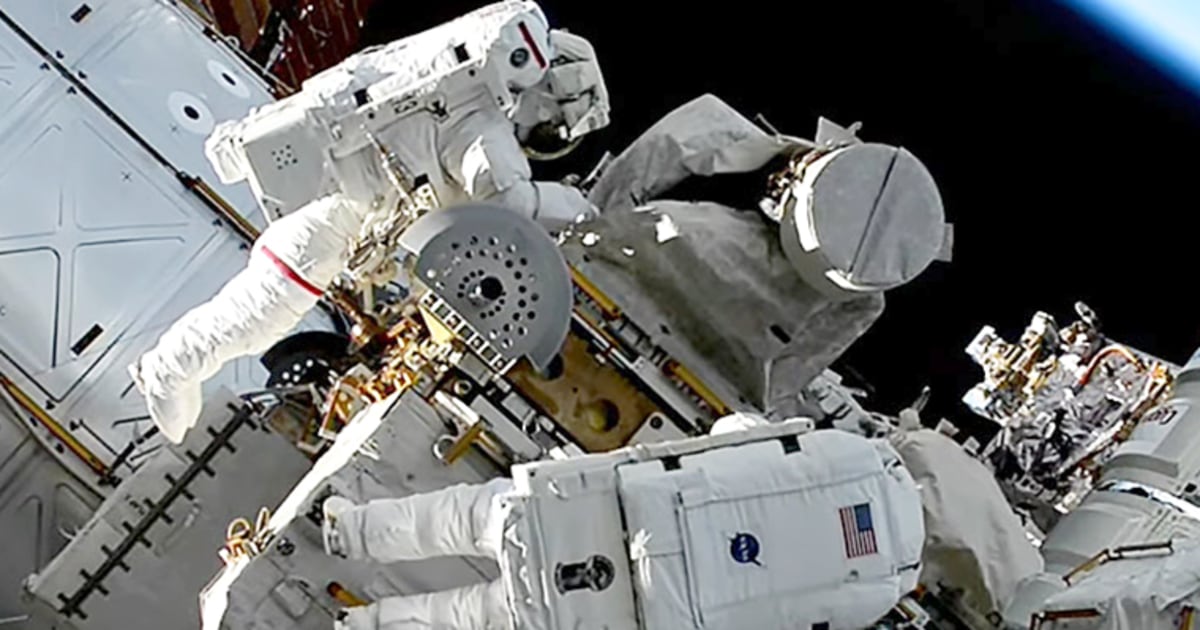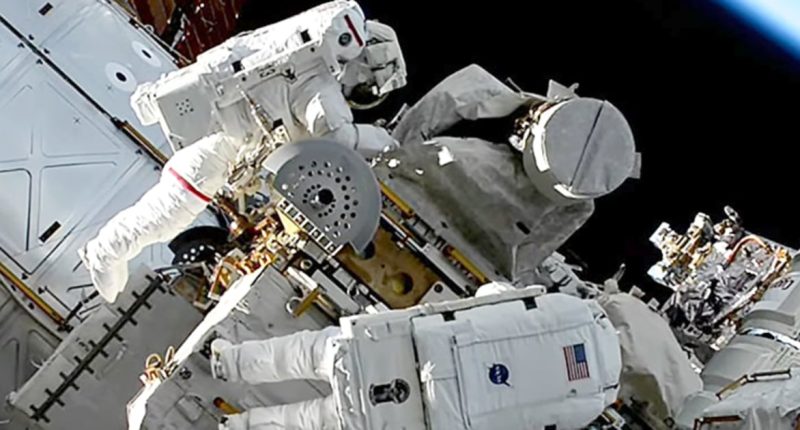
That’s no moon.
An astronaut’s tool bag that accidentally floated away during a routine spacewalk at the International Space Station is now orbiting Earth and may be bright enough to spot by keen-eyed skywatchers.
The bag drifted away from the space station this month when NASA astronauts Jasmin Moghbeli and Loral O’Hara were performing maintenance on the exterior of the orbiting outpost.
“During the activity, one tool bag was inadvertently lost,” NASA officials wrote Nov. 1 in a blog post detailing the outcome of the spacewalk. “Flight controllers spotted the tool bag using external station cameras. The tools were not needed for the remainder of the spacewalk.”
The bag is now circling the planet in low-Earth orbit, but NASA said there’s little danger of the tools hitting the International Space Station.
“Mission Control analyzed the bag’s trajectory and determined that risk of recontacting the station is low and that the onboard crew and space station are safe with no action required,” the agency said in the blog post.
For now then, the lost tool bag has become a new artificial “star” in the night sky.
Dave Dickinson, author of the 2020 book “The Backyard Astronomer’s Field Guide: How to Find the Best Objects the Night Sky has to Offer,” posted on X that the tool bag is orbiting about a minute ahead of the space station.
Dickinson added that the tool bag has a stellar magnitude of +6, which means it may be tough to spot with the unaided eye but could be bright enough to pick out in the night sky with a pair of binoculars.
Stellar magnitude is used to describe a star’s apparent brightness in the night sky. The magnitude scale spans -30 to +30, with the brightest objects being assigned the smallest numbers and the faintest objects having the largest numbers. For instance, the full moon has a magnitude of -12.6, while a fainter celestial object may have a magnitude of +10 or greater.
Meganne Christian, an astronaut with the European Space Agency, shared NASA-recorded footage on X of the tool bag untethered and floating away during the Nov. 1 spacewalk.
Skywatchers who want to try to spot the tool bag in orbit should head out on a clear night and first determine when the International Space Station is passing overhead.
NASA’s Spot the Station mobile app and website can help people track the space station based on their location. The ISS is typically the third-brightest object in the night sky, according to NASA, and looks like a fast-moving plane to the naked eye.
Then, to try to see the lost bag, stargazers can use binoculars to monitor a bit ahead of the space station’s path, looking for a faint moving object leading the way.
The tool bag will likely remain visible in the night sky for a few months, before its orbit slowly degrades and it eventually falls toward Earth. Like other small objects in low-Earth orbit, such as spent rocket parts and small satellites, the bag will then burn up harmlessly in the atmosphere.
Source: | This article originally belongs to Nbcnews.com










